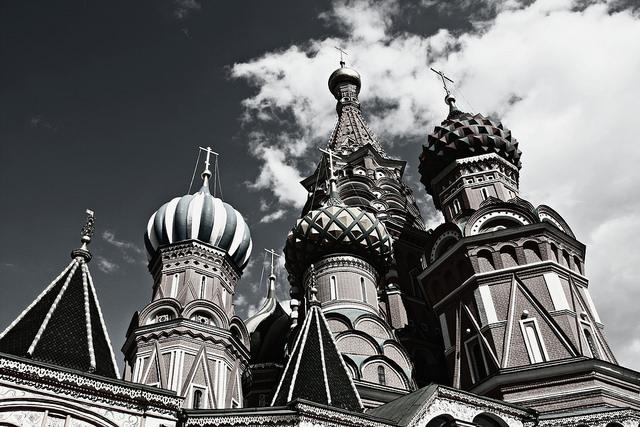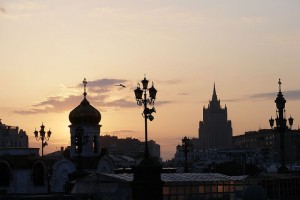
Where Russia meets Rusholme
by Richard Birch | May 18, 2017
Down an unassuming side-street of Rusholme, not far from some of the university campuses, an onion-shaped dome stands proud against the cloudy Mancunian sky. Rusholme is itself a vibrant melting pot of different, cultures, demographics and attitudes: students wandering between the hipster bars and clubs, the sickly-sweet scent of shisha wafting through the air, mingled with the smell of fried chicken. But this sight of the onion dome—a unique architectural feature common to Russian Orthodox churches—seems, even here, out of place.
Stepping over the threshold, I am transported thousands of miles East. No effort is made to accommodate the non-Russian: all signs are in the Cyrillic alphabet, the church-goers speak to one another in Russian, and the entire liturgy is sung in traditional Church Slavonic. The heady wafts of incense offer a sharp contrast to the locale’s penchant for bubbling hookah, while the solemn chanting is truly ethereal, otherworldly, and ancient. Greeting each other warmly, the church-goers show themselves to be a thriving, tightly-knit community, and this church its beating heart. From every corner of this modern English city, they come to unite in their common cultural apparatus.
It can be easy to forget that nationwide, there are hundreds of totally unique and separate cultures and communities. Russian is one of over 200 languages spoken in Manchester, while 38,000 British people were born in Russia. The dome on the skyline, then, stands as a striking example of a community within a community, proud of its heritage yet woven into the fabric of a diverse and multicultural city. It is true that the single dome atop this Mancunian church offers only a flicker of the ornate grandeur of the Church of the Saviour on Spilled Blood in St Petersburg. And yet, even in just this flicker, the lineage between the two is keenly felt.
The first record of an onion dome atop a Russian Orthodox church dates from the reign of Fyodor I, the son of Ivan the Terrible. His father remains in Western memory as a despot of mythical proportions, supposedly born with webbed feet and a full set of teeth. And yet, more pertinently here, he also achieved the controversial unification of Russia with the majority-Muslim kingdom of Kazan. The domes that adorn St. Basil’s Cathedral in Moscow each represent the battles and sieges involved in Kazan’s capture, when the local Muslim population was forced to leave or convert. The design of the onion dome, so instantly recognisable as a Russian symbol was, supposedly, borrowed from this new kingdom. So, the small community setting of Rusholme itself offers a microcosmic view of one of the most enormously diverse countries in the world.
Young and old attend the service, circulating from the seats to the icons and back round, kneeling, kissing and bowing before the icons, and then lighting candles. There is much in common with other services; but the solemn yet familial atmosphere feels both mystical and somehow welcoming in comparison to their Anglican counterparts. Priests wearing the traditional Russian Orthodox vestments—long yellow robes with a ‘kamilavka’, or a stiff hat—stand by young boys carrying the candles and instruments of the sacrament. The parents look on with pride while young kids play peacefully at the back of the church room. This spectrum of ages, from the suited, bespectacled old man conducting the choir to the small children at the back, really makes this feel like a living church.
I remember my Russian teacher once told me that it is better to have a friend than a hundred kopeks. Though a common sentiment across much of the world, this valuation of the ties of friendship and family bonds over money is one that seems to hold true. It is these ties that form the centre of the rich culture that these people have proudly maintained. Even in a world far removed from its origins, the image of these Mancunians bowing before gilded iconography of the Madonna and child remains stirring and evocative. It is, in short, forever intertwined with the snow-capped domes of St. Petersburg.
Photo credit: flickr




